Search Images
Browse Content (p. 1375)
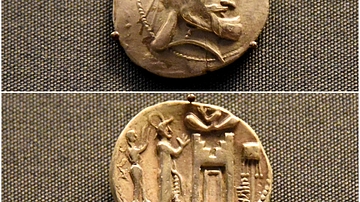
Image
Silver Coin of Vadfradad I
This coin depicts Vadfradad I, king of Persis (Fars) in Southern Iran, who can be identified on both sides of the coin by his special headgear. On the back (lower image), a figure holds up a royal headband (diadem) as a symbol of kingship...
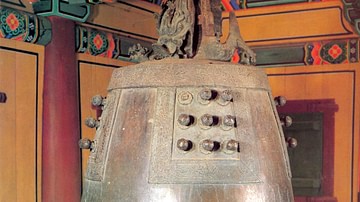
Image
Sangwonsa Bell
The bronze bell at the Buddhist Sangwonsa temple in Pyeongchang. The bronze-cast bell dates to 725 CE and is the oldest surviving such bell from ancient Korea.
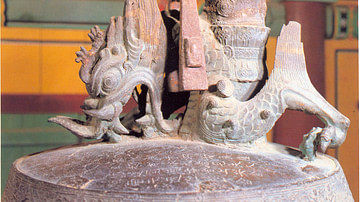
Image
Dragon Bell Suspension, Sangwonsa Temple
A detail of the dragon suspension of the bronze bell at the Sangwonsa temple in Pyeongchang. The bronze-cast bell dates to 725 and is the oldest surviving such bell from ancient Korea.
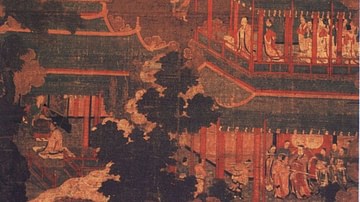
Image
Goryeo Palace Painting
A painting of the royal palace at Songdo (Kaesong). Goryeo period (918-1392 CE), Korea.
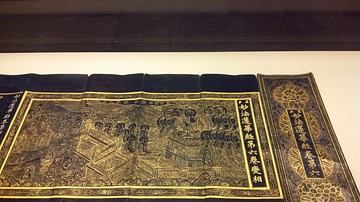
Image
Buddhist Illuminated Manuscript, Goryeo Period
An illuminated text of the Buddhist Lotus sutra. Goryeo period (918-1392 CE).
Gwangdeoksa temple in Chenan, Korea.
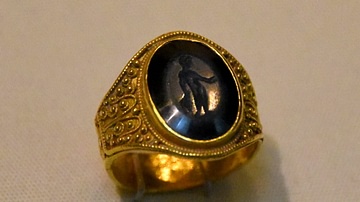
Image
Intaglio Finger-Ring from Anglo-Saxon England
In early Anglo-Saxon England, the highest status men were buried with unique and luxurious items, like this gold finger-ring set with an engraved Roman gem (intaglio). The gem itself dates back to around the 1st century CE while the ring...
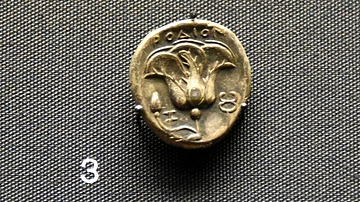
Image
Rhodes Silver Tetradrachm
Some Greek cities used images for their names, so "readers" did not have to be literate. In Rhodes, a rose (rhodon) was used. Silver tetradrachm coin, circa 400-380 BCE. From Rhodes, Greece. (The British Museum, London).
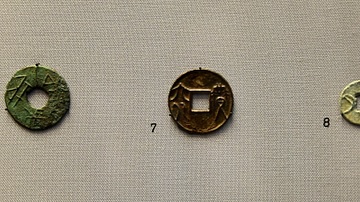
Image
Round Coins from Ancient China
During the Warring States period, some States issued round coins with a round or squared hole in the middle. The inscription usually indicates the weight or value. 6. Coin with weight in jin, Wei State. 7. Coin with value in huo, Qi State...
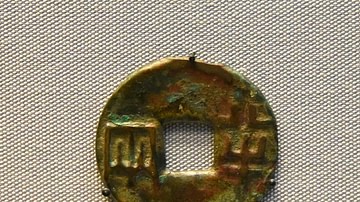
Image
Banliang Coin
When Qin Shihuang (the First Emperor) unified the Warring States in 221 BCE, he standardized the coinage. He made the banliang (half-ounce) coin of the Qin State standard throughout the Empire, and declared all other coins obsolete. The round...
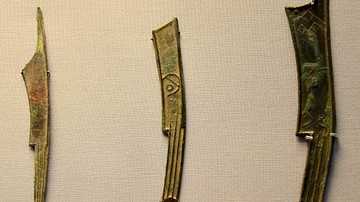
Image
Knife Money from Ancient China
Knife money of the Warring States period retained some features of the real tools, including the ring and the strengethening ridges on the handle. The States in the north and north-east issued knife money. 1. Zhao State, circa 500 BCE...